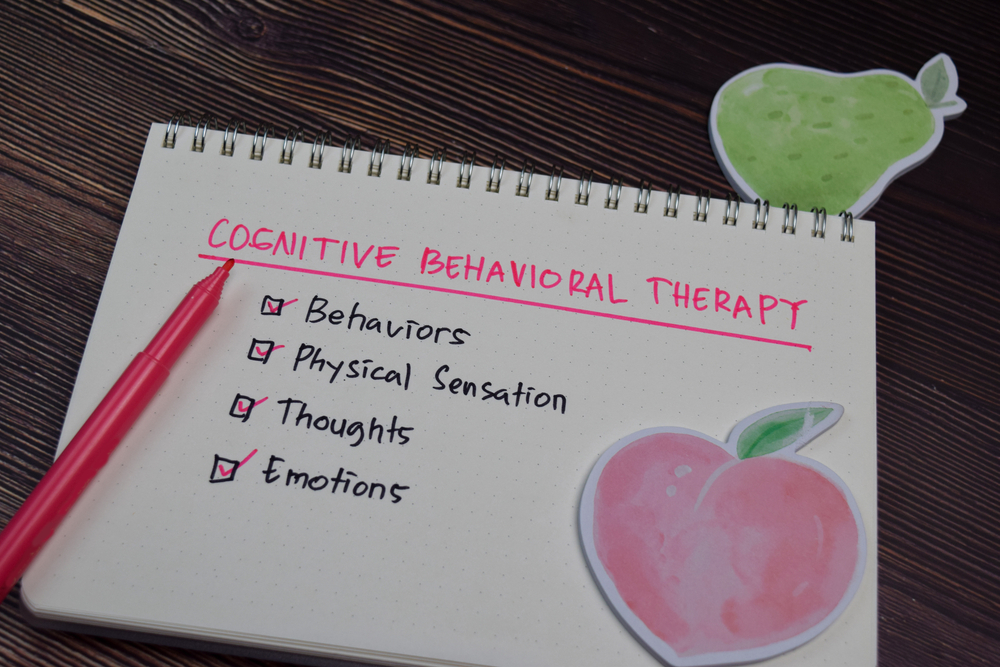- October 22, 2024
- by Shalini Murmu
- Trauma
When we mention “trauma,” most of us instinctively picture a single event, something distressing or unfortunate, like a car crash or an assault. However, trauma is much more complicated than that. The significance lies not just in what you experience, but in the profound impact it has on your inner self. Trauma infiltrates both the mind and body, resulting in emotional and psychological scars that might take years, if not decades, to heal. This is why understanding trauma in all its nuances is so important, especially when we talk about issues like PTSD and Complex PTSD.
When your mind is constantly on “high alert,” even though the threat has long passed, even hearing a similar sound that occurred during the incident, you’re transported back to a frightening memory within seconds. It can lead to feeling absolutely harrowing the day ahead. Over time, trauma victims start viewing the world as fundamentally unsafe, making it nearly impossible to trust anyone. This is where Complex PTSD develops, presenting a different, more complex challenge than PTSD on its own.
But here’s the good news! Recovering from trauma is very much achievable. With the right support, you can find your path back to a life that feels secure, satisfying, and complete. That’s where trauma-informed therapy steps in, offering a caring, tailored approach that emphasizes not just treatment, but true healing from within.
Why Trauma-Informed Care Matters
Trauma-informed therapy represents a significant change in how PTSD conditions are tackled. Traditional therapies might concentrate solely on the symptoms, but trauma-informed care digs deeper. It values safety, trust, and empowerment, recognizing that the therapeutic relationship itself plays a vital role in the healing process.
In this method, there’s no rush for a “quick fix.” Instead, the emphasis is on creating a space where the individual genuinely feels safe, physically, emotionally, and mentally. Without a sense of safety, trust can’t flourish, and without trust, genuine healing can’t happen. This type of therapy encourages one to take charge of their healing journey, making sure they feel empowered, not just as patients, but as survivors reclaiming their lives.
Layers Of Trauma
i. PTSD Defined
goes through a really traumatic experience. This could range from a violent attack to a devastating natural disaster. Those suffering from PTSD frequently deal with disturbing flashbacks of the trauma, a continuous state of anxiety, hypervigilance and avoidance behaviors, where individuals steer clear of anything that reminds them of the traumatic past.
Many individuals coping with PTSD struggle with sleep disturbances, face mood swings, and wrestle with profound feelings of guilt or shame. Mental health treatment facilities can offer specialized support, including dual diagnosis treatment centers that tackle both PTSD and related issues such as substance abuse. If you or someone you care about is having a tough time with their mental health, reaching out to a professional is a crucial step toward healing.
ii. Complex PTSD
Complex PTSD, or C-PTSD, refers to the impact of long-lasting or repeated trauma, especially carried through childhood. Unlike PTSD, which usually comes from one event, Complex PTSD stems from ongoing trauma such as childhood abuse, domestic violence, or even being held captive.
What sets Complex PTSD apart is just how deep and wide-ranging its symptoms can be. It’s not only about flashbacks or nightmares. People living with Complex PTSD often face emotional dysregulation, making it hard to manage their feelings. They can find themselves battling deep-seated guilt, shame, or feelings of inferiority, which might foster a negative self-view that permeates their daily living. Relationships can also get really complicated, as these individuals might cling too tightly or push others away because of fear of being abandoned or not trusting anyone.
For many, Complex PTSD is closely linked with depression, bringing about signs of manic depression, mood swings, and a sense of hopelessness. It’s pretty common for one to look for mental health counselors or resources as they try to deal with these tough emotions. But finding the right mental health services that really understand these specific needs can truly make a world of difference.
iii. Overlap and Misdiagnosis
One of the biggest hurdles in treating Complex PTSD is the chance of being misdiagnosed. Many people with Complex PTSD are mistakenly diagnosed with Borderline Personality Disorder (BPD) because of similar signs like emotional instability and intense relationships. While there’s some overlap, the underlying causes and treatment needs are different. Getting an accurate diagnosis is highly important because treatment for BPD might not cover the trauma aspect, leaving people feeling totally misunderstood and untreated.
Plus, many mental health professionals might not fully grasp the differences between PTSD and Complex PTSD, which can make the healing process even tougher. That’s why trauma-informed care and working with therapists who really get the nuances of trauma are absolutely essential.
Key Components of Trauma-Informed Therapy
When it comes to trauma, particularly in the form of Complex PTSD or PTSD, it calls for a thoughtful and compassionate approach to therapy that looks at both mental and physical aspects. Traditional therapy methods sometimes miss the mark on what trauma survivors truly need, which is why having various personalized approaches is very important. Get into some of the key therapies that assist trauma survivors in their healing journey, along with their pros and cons.
i. Cognitive Behavioral Therapy (CBT) for Trauma
Cognitive Behavioral Therapy (CBT) is one of the go-to methods for dealing with trauma, especially when it comes to post-traumatic stress disorder (PTSD). What’s great about CBT is its clear-cut way of helping people rethink negative thought patterns. By pinpointing and challenging twisted beliefs, empowers individuals to take back control of their thoughts, which is vital for those navigating trauma. For example, a person suffering from PTSD might struggle with intense guilt, mistakenly believing they had a hand in their trauma. CBT aims to break down these damaging beliefs and substitute them with healthier, more rational viewpoints.

That said, CBT does have its drawbacks, particularly when it’s the only approach used for complex PTSD. Survivors who have endured prolonged abuse often grapple with deep emotional turmoil, shaky self-esteem, and struggles in relationships. While CBT can aid in shifting certain thought patterns, it doesn’t always tackle the emotional and physical layers of trauma. This is exactly why people with complex PTSD symptoms often need more holistic methods, like DBT or somatic therapies.
ii. Eye Movement Desensitization and Reprocessing (EMDR)
EMDR has been gaining popularity as a go-to option for treating PTSD lately, and it’s easy to see why. This therapy uses bilateral stimulation, such as guided eye movements, while a person focuses on their traumatic memories. The aim of EMDR is to assist in reprocessing traumatic events that seem to be “stuck” in the brain. Many trauma survivors deal with flashbacks or intrusive thoughts because those memories haven’t been fully processed. EMDR helps the brain to reorganize these memories as part of the past, rather than something that continues to linger.

One of the most impressive features of EMDR is that it can work with little verbal expression. This is crucial since not every trauma survivor is ready or able to talk about their trauma in detail which is a common hurdle in traditional PTSD therapy. For people dealing with complex PTSD or childhood trauma, EMDR provides a softer route to healing.
Although it proves to be quite effective, one should acknowledge that EMDR does not function as a standalone remedy every time. It tends to work best when paired with other therapies, particularly for those with complex PTSD, who might need to confront deep-rooted emotional issues that need ongoing support and care.
iii. Somatic Experiencing and Body-Centered Approaches
When it comes to trauma therapy, one element that often gets brushed aside is how our bodies contribute to the healing process. Trauma isn’t just a psychological experience, it’s something that gets trapped in our bodies becoming a part of ourselves. You may have heard of the “fight, flight, or freeze” instinct. In the midst of traumatic situations, our bodies kick into survival mode, and even after the danger has passed, we can stay locked in that heightened state. That’s where Somatic Experiencing and other body-focused therapies step in.

These therapeutic methods aim to guide people in safely reconnecting with their bodies. By finding ways to free themselves from the energy that past hardships have confined, people can initiate a journey toward inner peace and assurance. Somatic therapies can be particularly helpful for those dealing with C-PTSD since ongoing trauma can lead to lasting physical tension, dissociation, or chronic discomfort.
Since trauma impacts both the mind and the body, using body-centered techniques is crucial for a more comprehensive healing experience. Nowadays, a lot of PTSD residential treatment programs are incorporating somatic therapies into their broader treatment strategies, acknowledging that mental healing and physical recovery go hand in hand.
iv. Dialectical Behavior Therapy for Complex Trauma
For those who have faced long-term trauma, Dialectical Behavior Therapy (DBT) provides essential tools for handling emotional ups and downs and enhancing relationships. Unlike CBT, which zeroes in on thought processes, DBT focuses more on regulating emotions, practicing mindfulness, and being effective in interpersonal situations. These skills are vital for trauma survivors who often find themselves overwhelmed by emotions or struggling to build trusting connections.

DBT’s organized approach helps trauma survivors learn how to cope with distress without turning to harmful behaviors. It equips them with strategies to deal with intense feelings of shame, fear, or abandonment, the emotions frequently experienced by those showing complex PTSD symptoms. For individuals looking for ways to treat complex PTSD, DBT can significantly empower them to take charge of their emotional well-being.
Experts Insights Into Trauma Responses
There are also trauma reactions that often go unnoticed, yet they’re just as important for healing. Grasping these less common responses and the importance of a comprehensive approach can greatly impact trauma-informed therapy.
i. “Freeze” Response: A Common Misunderstanding
We frequently talk about the “fight or flight” response, but trauma reactions are actually much more complex. For numerous trauma survivors, the “freeze” response is a significant yet often misinterpreted response. Unlike “fight or flight,” where people take action against a perceived danger, the freeze reaction causes a person to become immobilized. It’s almost like their mind and body just shut down, caught between the options of fleeing or fighting.

In scenarios involving long-lasting or intense trauma, like childhood abuse or domestic violence, the freeze response turns into a vital survival tool. Those who have endured might sense entrapment, vulnerability, and a lack of ability to liberate themselves from their realities. Sadly, in conventional PTSD therapy, the freeze response tends to get neglected. Many therapeutic approaches highlight talk therapy or cognitive strategies, but how can someone who feels emotionally “frozen” participate in therapy?
It’s crucial to recognize and address the freeze response. The PTSD inpatient treatment centers are actively assisting trauma survivors in gently “thawing” from this state. By fostering a link between mind and body, these therapies support individuals in dealing with their trauma without excessive emotional strain. Acknowledging this reaction in therapy can pave the way for deeper healing, offering relief to those who have felt stuck for far too long.
ii. Trauma Bonds and Therapy
One thing that often gets overlooked when we talk about trauma is the way trauma bonds form, those intense emotional ties that survivors might develop with their abusers. This is particularly common in cases of Complex PTSD stemming from long-term trauma, where survivors find themselves torn about their feelings toward the person who hurt them. These connections can completely complicate the healing journey and make it tough for survivors to break free from abusive relationships.

Think about a child raised in an abusive house or an adult caught in a cycle of domestic abuse. No matter the hardships they’ve faced, the victim continues to have a profound sense of loyalty, love, or responsibility for their abuser. This internal struggle makes it even tougher for them to reach out for help or trust a PTSD therapist. It’s also a big reason why trauma bonds can lead to repeating unhealthy relationship patterns if they’re not addressed during PTSD treatment.
In therapy, identifying trauma bonds is essential to help people escape the cycle of abuse. Survivors usually benefit from a kind and understanding approach that recognizes their mixed emotions instead of judging them. A specializing Complex PTSD therapist and trauma-informed care will work carefully to unravel these emotional ties, helping the survivor regain their sense of independence. It’s not just about getting away from the abuser; it’s also about grasping the emotional dynamics involved and learning how to build healthier relationships in the future.
Need For A Holistic Approach
Typically, mental health treatment zeroes in on cognitive and emotional healing, but those who have gone through trauma often require more than just mind-focused strategies. When facing complex PTSD symptoms, therapy that merely addresses thoughts or feelings might fall short. Trauma influences every facet of a person’s being—physically, emotionally, socially, and spiritually. So, a holistic approach that weaves all these aspects together can boost outcomes for trauma survivors.
Physical health is a crucial piece of the recovery puzzle. Trauma gets stored in our bodies, showing up as chronic pain, muscle tightness, or other health issues. Survivors might find that movement-based therapies, yoga, or even acupuncture can be beneficial on their healing path. Approaches that work with the body can help release trapped trauma energy and bring back a sense of safety within themselves.
Social connections matter a lot, too. Trauma can make survivors feel isolated, which can hinder their ability to build trusting relationships. Plenty of trauma-informed PTSD treatment centers put an emphasis on group therapy or peer support networks to help people rebuild those social ties. Reconnecting with others in a safe and supportive setting can reduce feelings of loneliness and boost emotional resilience.
Finally, incorporating creative and spiritual activities can give survivors fresh ways to express themselves and process their trauma. Art therapy, journaling, or meditation can provide alternative routes for survivors to make sense of what they’ve been through, especially for those who find it hard to express themselves verbally. Many inpatient trauma treatment centers include these creative practices, understanding that recovery isn’t a straight line and may need different paths to healing.
When to seek help?
- Recurrent Flashbacks or Nightmares: If you often find yourself re-experiencing traumatic events through vivid memories or dreams, it might be a good moment to consider PTSD treatment.
- Avoidance of Trauma-Related Triggers: If you’re dodging people, places, or situations that remind you of your trauma, that could be a sign that you need PTSD therapy.
- Emotional Numbness or Detachment: If you’re feeling cut off from your feelings, your loved ones, or just day-to-day life, it might point to trauma-related issues that call for PTSD counseling.
- Hypervigilance or Increased Anxiety: Always feeling tense, jumpy, or unable to relax? Those might be indicators that your body is still operating in “survival mode”.
- Difficulty in Relationships: If you’re having a tough time building or keeping healthy relationships, or if you find yourself having emotional meltdowns, that could hint at unresolved trauma or a trauma bond.
- Persistent Negative Thoughts or Self-Blame: If you find yourself trapped in a cycle of guilt, shame, or self-doubt, speaking with a therapist could assist you in changing those thoughts.
- Self-Destructive Behavior: If you’re into risky or harmful actions, like substance abuse or reckless behavior, that’s definitely a red flag, and time to seek help right away.
- Physical Symptoms: If you’re dealing with unexplained chronic pain, headaches, or fatigue, those often come hand in hand with trauma.
- Inability to Function in Daily Life: If trauma is starting to interfere with your job, relationships, or your ability to look after yourself, that’s a pretty clear sign that you should think about getting professional PTSD help.
- Experiencing Multiple Symptoms for Over a Month: If you’ve been facing any of these symptoms for more than a month, it’s a good idea to consult a PTSD specialist in your locality.
Every person’s trauma experience is unique, but what is universally needed is thoughtful, trauma-sensitive care. Should you or someone you know be struggling with trauma, seeking help from a PTSD specialist or considering residential trauma therapy options may be wise. The path to recovery from trauma is gradual, demanding time, compassion, and a strong circle of support. With the guidance of these therapies and a skilled mental health professional, overcoming trauma is not only achievable but well within your reach.
Are you feeling drained by your past, questioning if things will ever get better? At North America Behavioral Health Services, we’ll guide you toward some of the renowned mental health treatment centers that specialize in helping you overcome the deep emotional scars of trauma. Whether you’re looking for specialized therapy, caring support, or just a starting point, we’ve got your back. It’s not only about getting by, it’s about truly flourishing. You deserve to live a more fruitful life, one that’s not dictated by the ghosts of the past.
Take that initial step with us. Contact us today, and let’s discover the right treatment for you together. A brighter, more satisfying future is just around the corner.
















